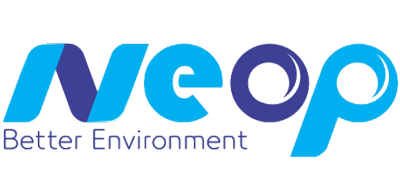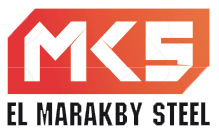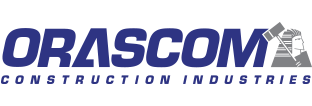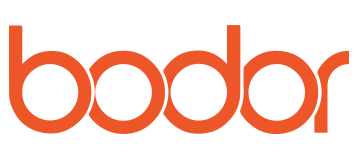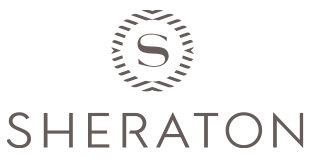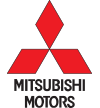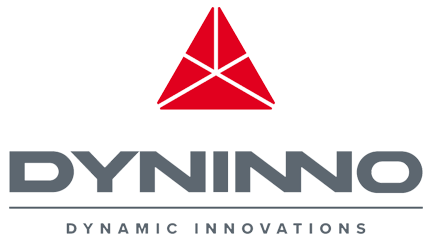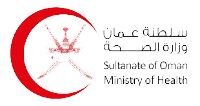Searching for a job is a process, and it’s often not an easy one. Regardless of where you are in the world. In many countries, there’s a high job turnover and companies are becoming more demanding and picky.
At the same time, some applicants lack the skills that needed to land a job. Meanwhile others, with more years of experience under their belt, are becoming as picky as hiring companies.
Finding the right job for you, a job that challenges you but also offers stability isn’t easy.
So, how can your resume stand out in the avalanche of resumes companies are getting for any vacancy they have?
In this article, we’ll be looking at the top job application tips both from recruiters and hiring managers.
Top challenges employers face when recruiting candidates
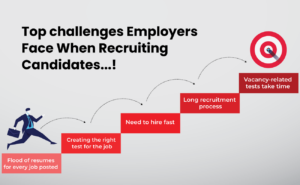
5 Top challenges employers face when recruiting candidates
The job market isn’t just hard for employees looking to move to a new company or new position. Or for fresh graduates just starting their careers. It’s hard for companies too.
For some companies, there are positions with an abundance of supply that it’s hard to find the right fit. For other jobs, especially in tech and software-as-a-service (SaaS), there’s a limited supply of candidates to fill vacancies.
Here are the top HR challenges companies face when they want to fill a position or vacancy.
Flood of resumes for every job posted
Whenever a company publishes a vacancy on a job board or websites like LinkedIn, they’re flooded with resumes. Many of which aren’t even relevant to the vacancy posted. This results in lots of wasted time and effort.
Creating the right test for the job
For some roles, candidates need to undergo a test to evaluate their skills in fulfilling this role.
Jobs that often require pre-hiring assessments or tests include translation job, copywriting jobs, sales jobs, tech jobs, among others.
Need to hire fast
A major hiring problem for many companies is they need to hire – yesterday! Unfortunately, the hiring process is neither fast, nor smooth. When companies get 1,000+ resumes for a single vacancy, reviewing all these CVs will hinder their desire to find the right candidate quickly.
Long recruitment process
Generally speaking, the standard hiring process comprises about 5 to 7 steps. From creating the correct job description to publishing the vacancy, to screening, testing, and eventually hiring the right candidate.
Vacancy-related tests take time
As mentioned, some vacancies require pre-hiring or employee assessments. This could be a psychometric test to understand a candidate’s cognitive skills, or a technical or position-related test.
Conducting one or both of these tests and evaluating the results takes time in the recruitment process.
Job application tips to get the interview

14 job application tips to get an interview
Now, it’s time to look at the top job application tips to help candidates increase their chances of landing, and passing, the job interview. And get hired.
1. Invest time in company research
“My golden tip for any job applicant is to invest enough time in studying the company and the role they’re applying for,” advises Mahmoud El-Zahwey, Content Services Manager at Contentech. “And if possible, research the interviewer’s profile.”
You’ll often hear people refer to the job search as a ‘job hunting.’ El-Zahwey adds that “if you’re hunting for an opportunity, you should put yourself on the other side of the story.”
El-Zahwey explains that when applying this method in his previous job searches, he was often “very successful.”
2. Read the job requirements in detail
Every recruiter’s nightmare is to go through a resume only to realize that it’s not a good fit to the shared job description.
So, my tip as a former managing editor and hiring manager is this: Read the job requirements carefully.
You don’t have to fit all the criteria. But the more skills you have that are listed in the job description, the better. If you’ve performed duties similar to those listed in the job description, then apply for the role.
3. Create a professional resume
One of the top reasons job applicants get rejected is because they don’t have a professional resume.
A professional resume doesn’t necessarily have to have a great design, be created on Canva, or use a template. It has to answer the recruiters’ and hiring manager’s questions:
- Do you have the skills needed to perform this role? (at least a few of the skills listed in the job description)
- Do you have the number of years of experience listed in the job description? (doesn’t have to be exact but close to the listed number)
- Have you done this type of work before?
- Are you familiar with the industry?
If a company seeks fresh graduates or juniors, the questions will vary. The focus will be on the candidate’s skills, education, and potential courses they’ve taken.
4. Connect with recruiters
Tech recruiter Israa El Tantawy advises candidates to connect with and follow recruiters in the industries and companies they’d like to work in.
This will help you find jobs suited to your interests.
The best place to follow and connect with recruiters is LinkedIn.
5. Show enthusiasm (but don’t overdo it)
If you’re a junior or fresh graduate, then “show your enthusiasm and excitement for the opportunity you’re applying for,” adds El-Zahwey. “But don’t overdo it.”
6. Reply to recruiters’ messages on social media
When applying for jobs and engaging with posts on hiring candidates, or if you have a strong background in a specific field, you may get messages from recruiters on LinkedIn. Recruiters often send these messages as ‘In Mails.’
El-Tantawy advises job seekers to respond to these emails with a ‘yes’ or ‘no,’ because “LinkedIn tracks your responses and informs recruiters if you regularly reply to messages or not.”
“If you’re among those who reply to messages, LinkedIn will suggest your name first to recruiters,” she adds.
7. Create a LinkedIn profile
Whether you’re just starting your career or have been in the workforce for several years, having a LinkedIn profile is essential to your job search.
LinkedIn is one of the most important websites for finding work. Not to mention, it’s the perfect place to connect with professionals and recruiters in your industry, grow your network, and increase your chances of finding a job.
So, create a LinkedIn profile, add your job experiences, and update it regularly.
LinkedIn also allows you to upload your resume so you can apply to jobs on the site. Make sure your resume on LinkedIn is up to date.
8. Use the ‘Open to work’ badge on LinkedIn
Assuming you’ve followed the previous step, this next job application tip from Israa El-Tantawy involves LinkedIn.
El-Tantawy advises candidates to get the ‘Open to work’ badge on their LinkedIn profile.
“Recruiters love to help open-to-work candidates find opportunities, more than passive candidates,” she explains. You can set up the ‘open to work’ badge to appear to recruiters only, not all LinkedIn members, she adds.
9. Update your CV on job sites
As a job seeker, you’ve probably created a professional profile and added your resume to many recruitment sites. Make sure you regularly update your CV on those sites.
You don’t want to apply to a job and get rejected because your resume is out of date.
Imagine applying for a job in 2024, only for the hiring manager to find out the resume they’re looking at hasn’t been updated since 2018!
10. Follow the instructions to submit an application
Some vacancies include instructions on how to submit your resume or apply for the job. When companies add instructions, they expect candidates to follow them.
To ensure candidates have read the job description in full, some companies ask you to add a certain phrase or mention the job title you’re applying for in the subject line.
Meanwhile, other companies may require you to create a profile on their recruitment portal. Others may ask you to not include your resume as an attachment or to not submit it as a PDF.
Some companies ask for a cover letter, while others ask for a portfolio, whereas some will ask for both.
The important thing is to read and follow the instructions. If you don’t, even if you’re the perfect candidate, the recruiter won’t read your resume or application. Because it doesn’t meet their requirements.
11. Review your resume and answers for typos
Before submitting your resume on a company’s job portal, a job board or recruitment site, you must read and reread your answers.
This ensures you don’t have any typos (week vs weak) or grammatical errors. It also ensures you don’t miss any questions on the job application form.
12. It’s OK to follow up
A frequently-asked question on recruitment and career-related groups on Facebook and LinkedIn is if it’s OK for candidates to follow up with recruiters.
And the answer is ‘Yes.’
You can follow up if you feel the process is taking too long. For example, if it’s been two weeks since you completed the first round of interviews.
Similarly, you should follow up if you receive a competing job offer. More importantly, if you’re no longer interested in the position you applied for, email the recruiter.
13. Don’t submit your resume everywhere
One of the biggest job application mistakes you can make is to submit your resume in as many jobs as you can.
This tactic won’t get you a job faster. It will just get your CV marked as spam or thrown in a virtual or physical trash folder faster.
Recruiters and hiring managers don’t appreciate people who waste their time. The tactic of applying to as many jobs as possible means you skip many of the above mentioned job application tips. Especially the research the company tip.
14. Change your mindset
When applying for a job, you “should go to every interview with the mindset that this is an opportunity you don’t want to miss. Even if there are many other opportunities in the market,” advises El-Zahwey.
This mindset shift will help you treat each job application as a serious endeavor. It will also help you project confidence in your interviews.
Final words
The recruitment process is a straining process for both ends, you, the candidate, and the recruiter or hiring manager. It requires time and effort on both sides. And with the large supply of candidates in certain fields, the process can take longer than expected.
Of course, there are many hiring mistakes companies make when searching for talents, but let’s assume that’s not always the case. It’s not the recruiter’s intention to ignore you or not reply to your email. They’re simply swamped with tons of work.
Take the opportunity to follow up and see if the company is still interested in hiring you.
If you’re searching for jobs, go to our portal and search between various job opportunities.



























